Today i’ll answer precisely how you can outrank your competitors on Google, regardless of their size and bank account. To help you achieve that, I’we prepared 27 actionable techniques
This guide on how to outrank competitors is made for SEO intermediates🟡
And some topics requires technical experience 🔴
Need an easier guide? Here is a beginner guide on how to rank for a keyword on Google 🟢
27 tips to outranking competitors on Google:
1. Outrank competitors with better search intent
Search intent is the most essential skill you need to master in SEO if you want to outrank your competitors. The reason search intent is so confusing to people is that there are several aspects of it.

Firstly, there’s search intent that defines what type of result people are searching for. That is, for some searches, users expect to see products. For others, they are looking for information.
Secondly, search intent has to do with psychology and expectations – two things that are highly informed by knowing your target audience. Determining whether a page should be informational or filled with products is relatively easy. However, the hard part is deciding what users expect to see and will find helpful on that page precisely.
2. Outrank rivals with more relevant title tags
To build upon the previous point, your title tags have a lot to do with search intent. The way you frame your title directly influences whether users will click on your result or on that of your competitors. Changing page titles helps your SEO indirectly by making your pages more relevant to your users, even though adding keywords in them doesn’t directly help your rankings.
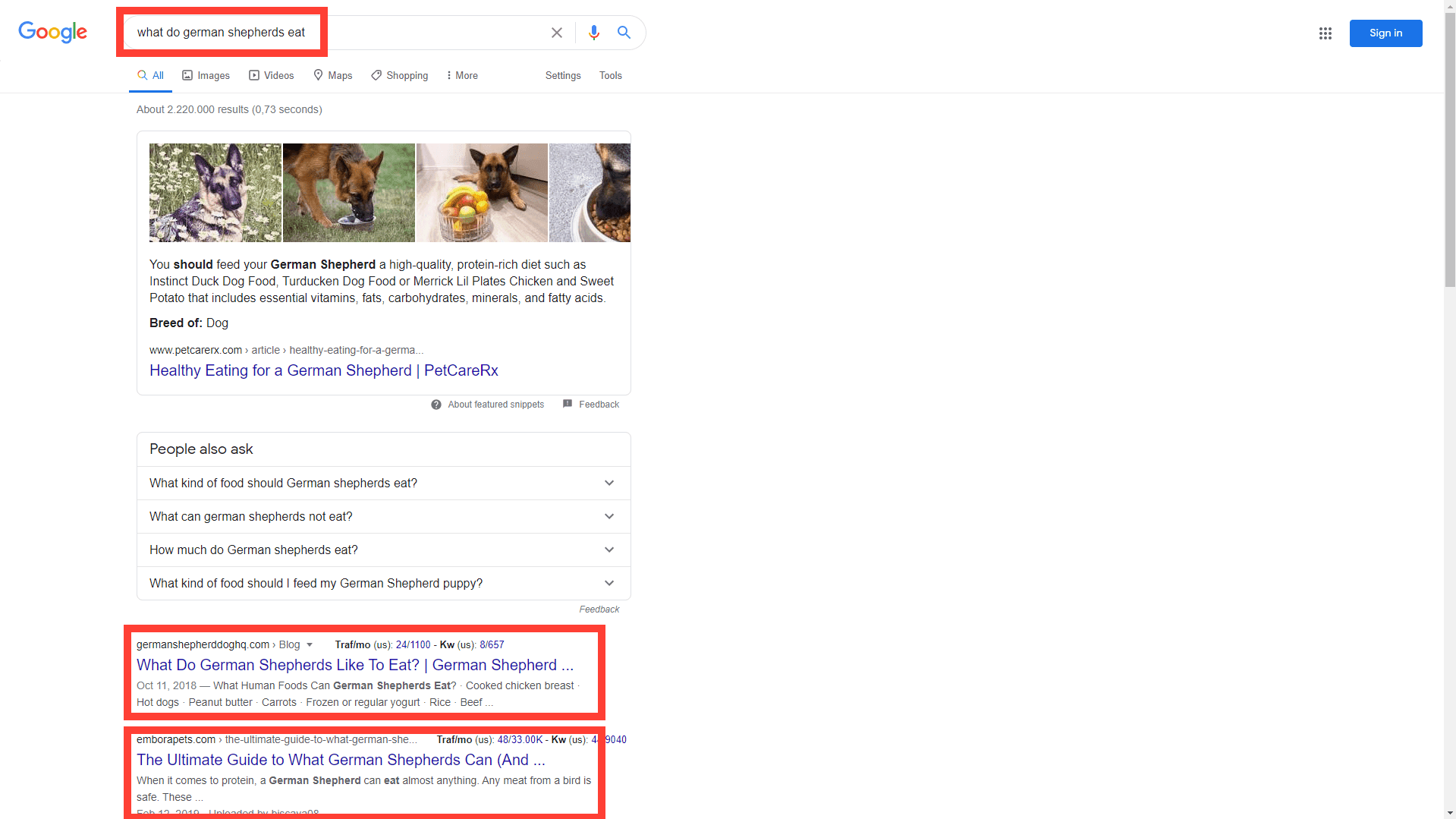
Merely writing the obvious isn’t enough – and we have to get smart and write incentivizing titles. Featuring certain power words brings you a step closer to victory. However, laying out a specific unique value proposition for each page gets you the win and maintains your website at the top of the search results.
This task has a lot to do with creating and managing expectations. Ask yourself what users expect to see on your page – and what is something great they didn’t even expect to find on such a page.
For example, a page about “newest summer dresses” obviously needs a list of the newest summer dresses. However, price listings, breakdowns of user reviews, and your hands-on reviews are precisely the practices that put you above the competition.
Handling such variables in the users’ expectations can get you a long way. For example, a question like “what hats can you combine these dresses with” will not directly rank in Google but will make the article more useful – and is probably something you can use in your title.
Therefore, a title like “+35 Latest Summer 2022 Dresses | Reviews & Outfit Inspirations” stands out a lot more in search compared to something like “Latest Summer Dresses | Best Summer Dresses For 2022.”
3. Improve CTRs with engaging meta descriptions
Now, we have mixed feelings about meta descriptions. That’s because meta descriptions are invaluable for some pages while hurting other pages’ performance.
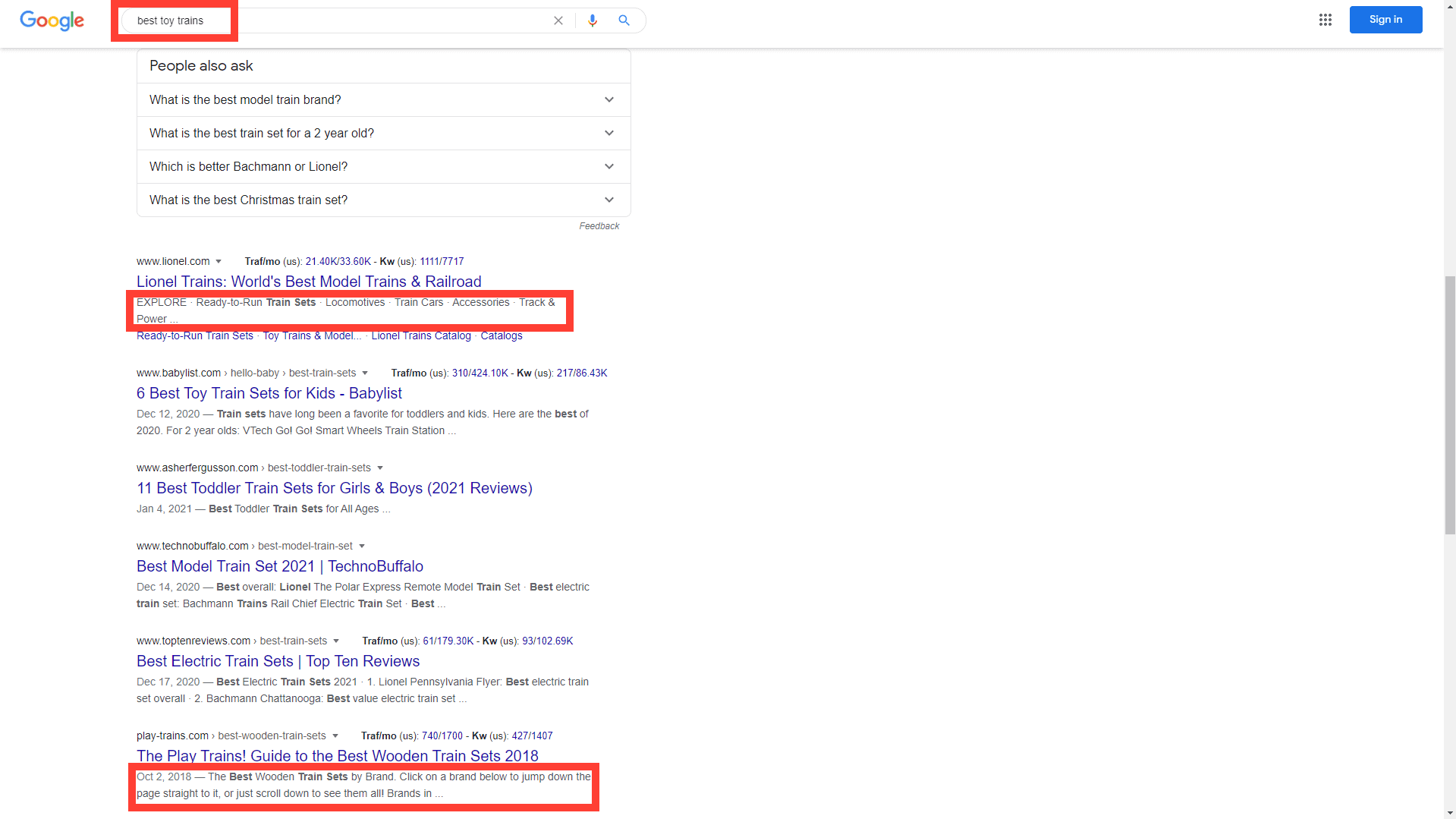
Generally, from what you learned above search intent, we’ve noticed that transactional pages that have something to do with a product or service benefit from meta descriptions.
Usually, on product pages, we don’t have exact text sections tailored to the user – and Google can choose any text at random. We want to avoid that because any random heading or product name can be taken – thus creating a limiting illusion that our result is not satisfactory.
Meanwhile, for informational pages, things change a little. Users search for information in different ways. They also use supplementary words to describe their problem better. Because of that, we’re almost sure that it’s unlikely we can cover all of those different scenarios with such a short text. Therefore, we opt out of using meta descriptions on informational pages and leave that part to Google.
Because we break down the problem from several different angles on informational pages, Google will recognize and offer that when the user presents them a slightly different search phrase than the main one we’ve optimized for.
4. Lower your bounce rate with better content
Bounce rate is funny. A bounce is simply an interaction with a page without any further interactions. It’s not a direct ranking factor in the sense that Google doesn’t actually tap into your analytics account and steal your data.
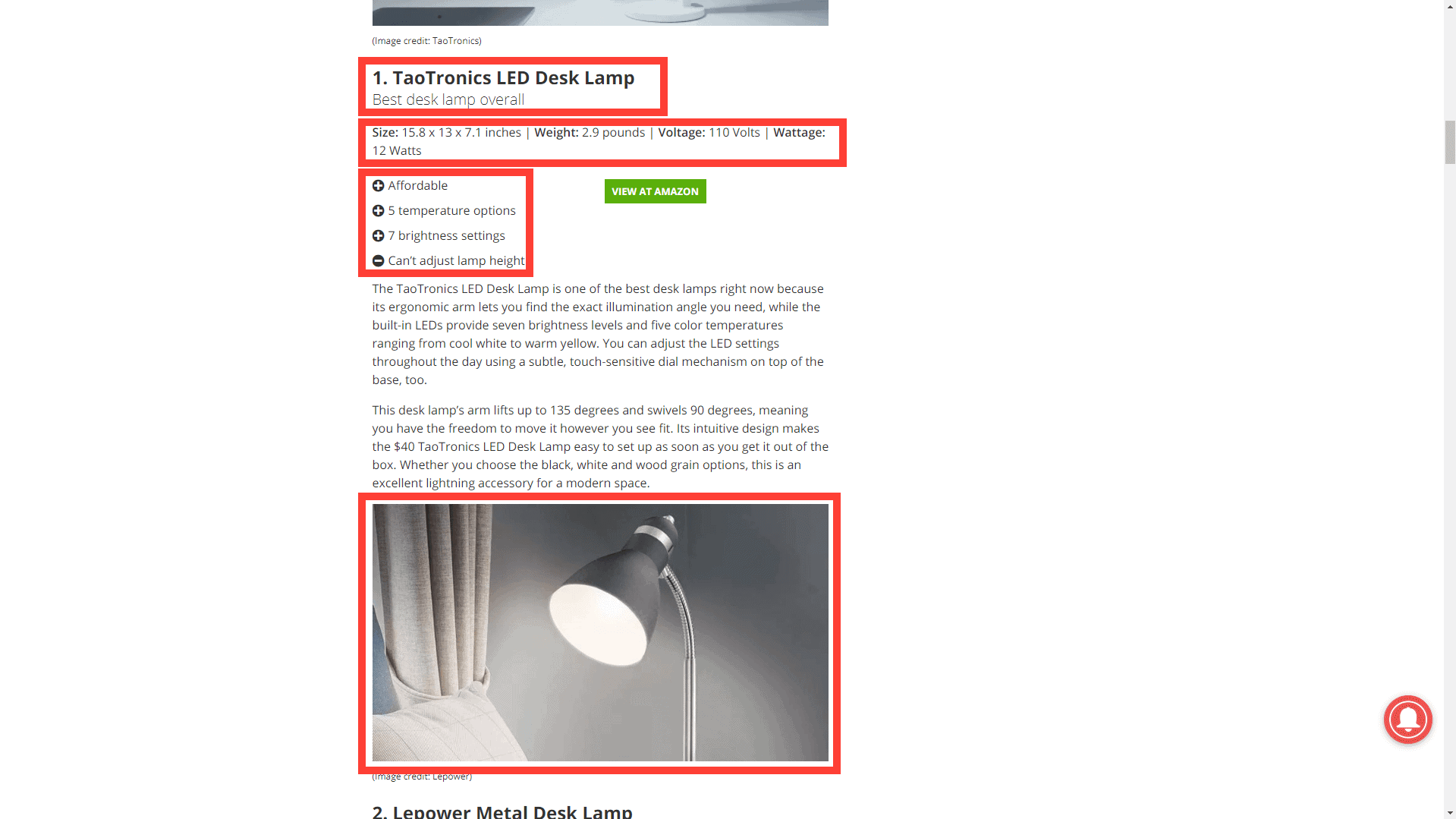
Instead, bounce rate is an indicator for yourself of how your pages are performing. Using this indicator, you can get insights into whether your users find your pages valuable and stay on them – or quickly bounce back to the search results after not finding the solution on your website.
Bounce rate is a metric caused by a combination of factors. Low bounce rates can begin from your first step of doing keyword research and search intent analysis. They can also appear once you’ve laid out your content on the page – because of a lousy content structure and hierarchy. High bounce rates are also the result of intrusive web page elements – like a slow loading speed, popups, or ads.
To fix your bounce rate, you either have to be really objective about your page – or you have to ask your users why they think your page isn’t good enough.
5. Improve your dwell time by engaging visitors
Dwell time is the amount of time users spend on your page before returning to the search results. Unfortunately, there is no direct way you can measure your dwell time. Instead, you need to rely on your Average Time on Page & Bounce Rate metrics from Google Analytics. However, they can still be a great indicator of dwell time since they do correlate.
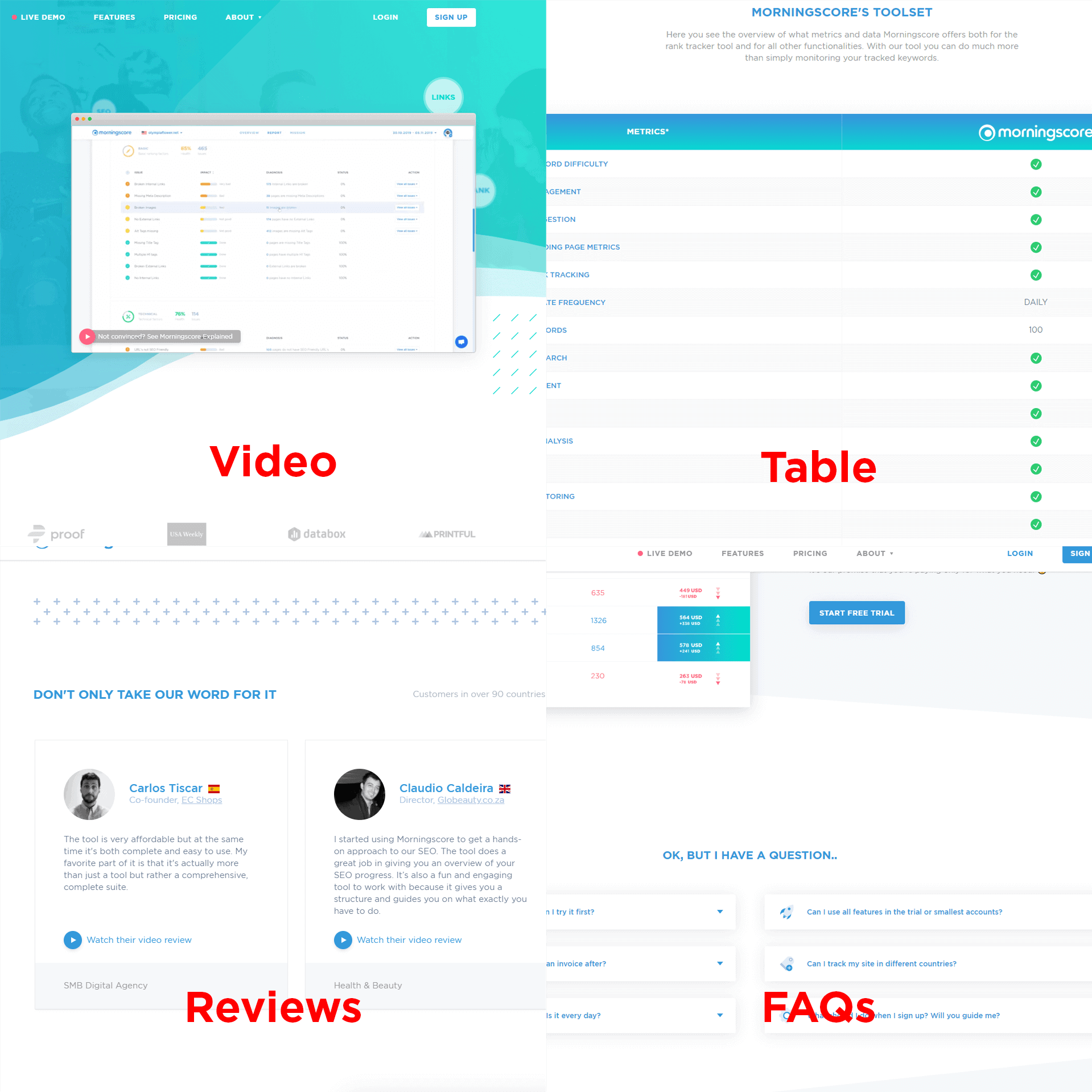
Improving dwell time is a factor of how satisfactory your content is. Similarly to bounce rate, mistakes that cause low dwell time can start from the very planning process or appear once your pages are entirely done.
In general, to improve your dwell time, you need to ensure your pages are satisfactory to the end user. Your pages need to be concrete and comprehensive. When a user searches to solve a problem (i.e., meet a need they have), your goal is to solve that need as much as possible. For simple products and information, that step is somewhat straightforward.
However, more complex products require a bit of planning. Our company is probably a good example here. We offer something we believe is unique – an SEO tool for beginners. The problem we’re facing is that SEO can be highly problematic for most business people. Therefore, reaching those people and understanding their needs is a task that is relatively hard to achieve.
To put things into perspective, imagine this. Firstly, what does a business owner search for when they need a rank tracker. Secondly, what does that business owner expect on a /rank-tracker/ page? Thirdly, what are supporting materials for challenges they might be facing? A table, a graph, a testimonial?
6. Decrease pogo-sticking to outrank competitors
Similarly to the point above, providing a direct and concrete answer and backing it up with valuable information will make your results more specific. In turn, this will prevent users from going back to the search results and clicking on other results.
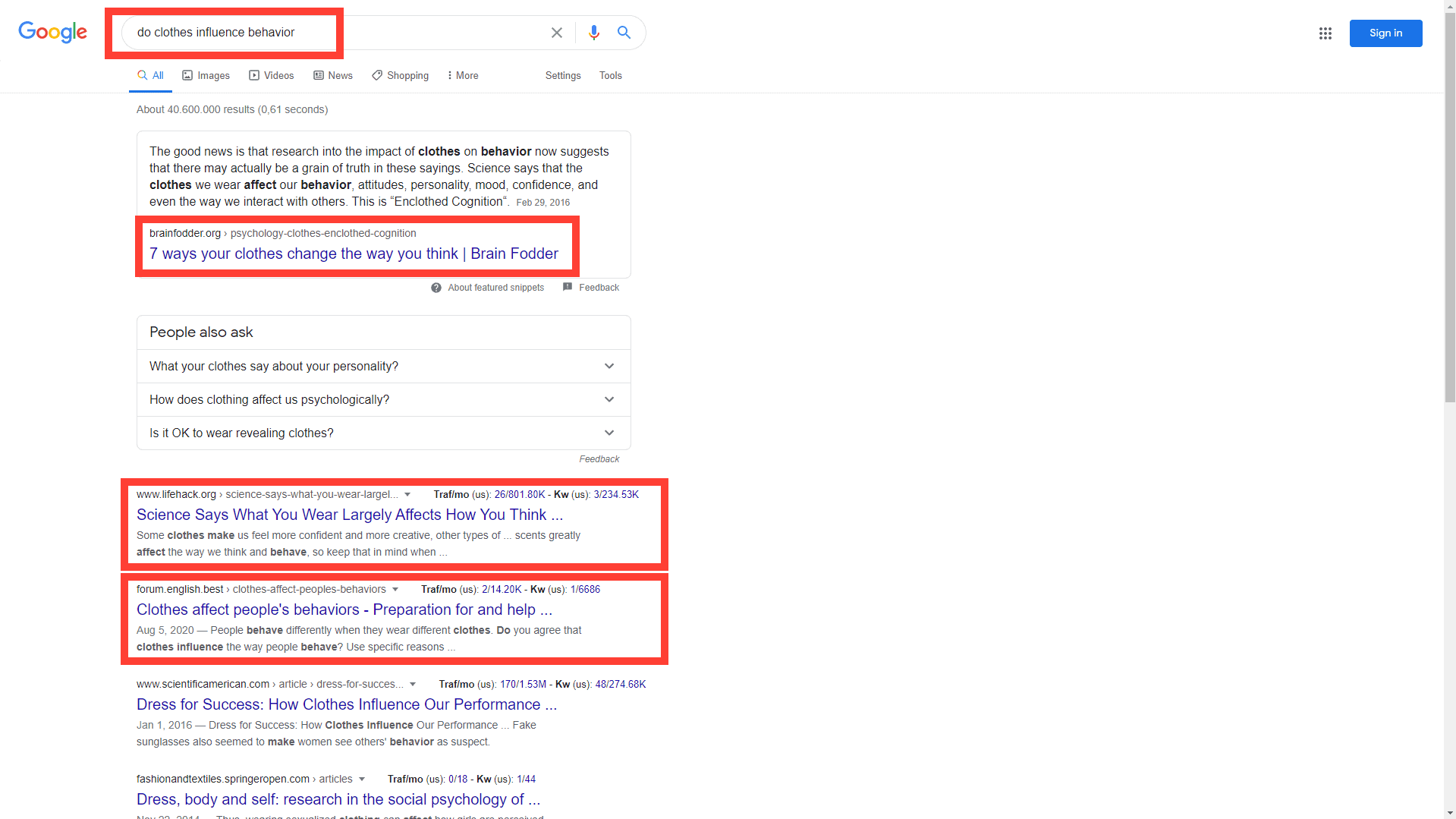
To illustrate how this affects your site, imagine this. A user searches for “do dogs dream when sleeping.” It’s an informational query that can be answered with a simple yes or no. Because of that, the page that ranks at the top has decided – let’s not waste time and do just that – give a quick answer.
Meanwhile, the answer ranking under that is a very in-depth informational article. Because the guys running this website understand that users naturally have more questions and don’t just want a yes/no, they’ve backed up their answer with more relevant research and interesting information surrounding the main topic.
A curious user types that query and sees the result. They both sound relevant and worthy of being at the top. They decide to click on the one that’s at the very top of the results page. Unfortunately, the page didn’t meet the users’ expectations well enough.
The user got to the answer quickly – but they felt they needed something more. Because of that, they go back to the search result and click on the second result. Here, they find a ton of relevant information that they love – and, as a result, spend half an hour on the page reading the article.
This combined implicit behavior tells Google what’s obvious to us humans – the user was not satisfied with the first result, went back, and liked the second result better. By now, Google’s thinking – why should I waste the user’s time with the current order of search results? Over time, these signals give Google enough data points for it to decide that it should promote the second result over the first.
On its own, Google does not use Pogo Sticking as a factor for individual pages – because millions of reasons and variables can cause it. However, combined with other behavioral signals, it helps Google build a better idea of the website’s overall performance in search.
7. Outrank them with laser-sharp keyword research
To succeed with your SEO efforts, you need to be specific around a topic or a keyword. Using the right keywords is the best way to tell Google what your pages are about. It also ensures that you appear for things people search for. A strategic keyword plan involves answering the questions “what should we rank for” and “what can we rank for.” Proper keyword research gives you insights that help you answer these questions.

Using the right keywords can be the difference between ranking for keywords your customers use – or appearing for search phrases only you use internally in your company – which, surprise, only you search for.
Whether it’s product pages or informational articles, narrowing in and addressing a specific problem the user is facing is only possible through good keyword research.
8. Write supporting content for important pages
The next thing you can already do to improve all of the above factors is to write supporting content for your important pages. See, Google rarely ranks generic websites at the top. Instead, it prefers more niche websites that can be trusted on a given topic.

This factor works both as the cause and the effect in your ranking equation. You need more content to rank important content. Similarly, you rank high by creating more content. Therefore, publishing relevant information that users search for in your niche can help you rank higher for other terms, too. As a side benefit, you’re also attracting and influencing users that are still not in the buying decision phase – but are now primed to think about your product when they have an immediate need for it.
To give you an example, imagine someone who sells fitness equipment – in this case, a gyroball. Writing informational content about your gyroball products can help your product page rank higher and make your website appear for even more related keywords by ranking individual articles. In the example from above, such supporting articles can be:
- “how long should I use a gyro ball for?”
- “are gyro balls safe?”
- “do gyro balls work?”
- “how to use a gyroball?”
- “are gyro balls effective for grip training?”
Lastly, keep in mind the tips from above. While you might feel like combining some of these topics into one article, consider the searcher’s intent. If they search for “Are gyro balls safe?”, do you believe they will click on a result titled “How do gyro balls work?”. The odds are not – and the more specific article on the subject wins.
9. Improve your content & headings formatting
You might have the best content in the industry – but if your users can’t see that, it might never get the love it deserves. Readability is a significant factor in SEO, and it is directly influenced by how you format your pages.
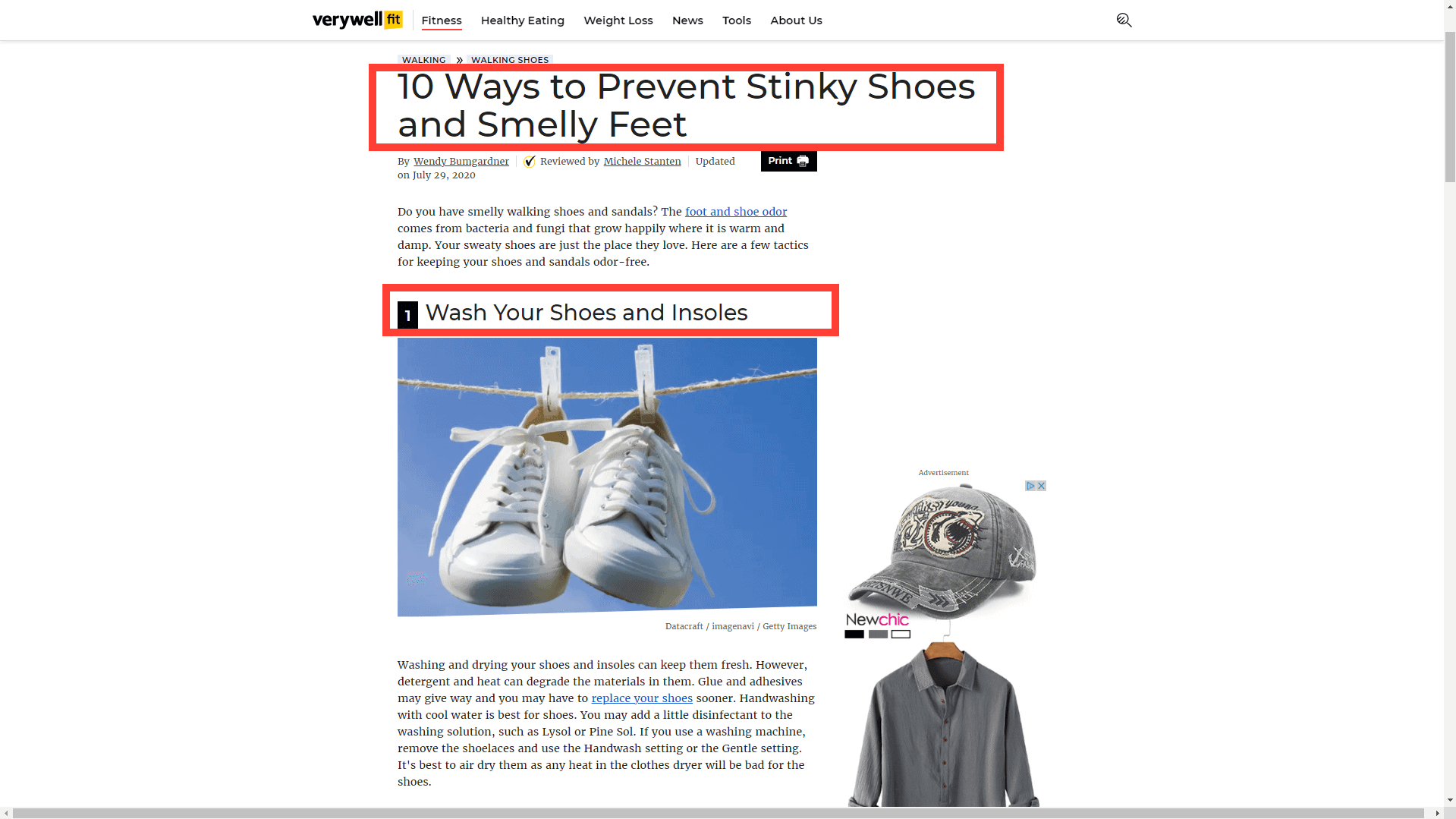
Your content should be easy to understand and digestible to your end-users. You can do that effectively by structuring your HTML Headings better, together with the overall layout of your pages and content.
Think about where and how you put images because they visually guide the user’s eye. Consider breaking down your paragraphs and sentences, so they are skimmable. Use bold and italics formatting on important text sections to highlight them so that they are easier to follow.
10. Regularly update content to keep it fresh
One factor that Google looks at, which your competitors might be following, is having fresh content on their website. This ranking factor doesn’t state that you need to re-write every page on your website every year because that is quite extreme. Instead, regularly checking through your content and removing old information or adding newer things you’ve learned signals to Google that you maintain your website. Therefore, Google sees that the quality of the information you provide matters to you – which is something it values, too – and ranks you higher.
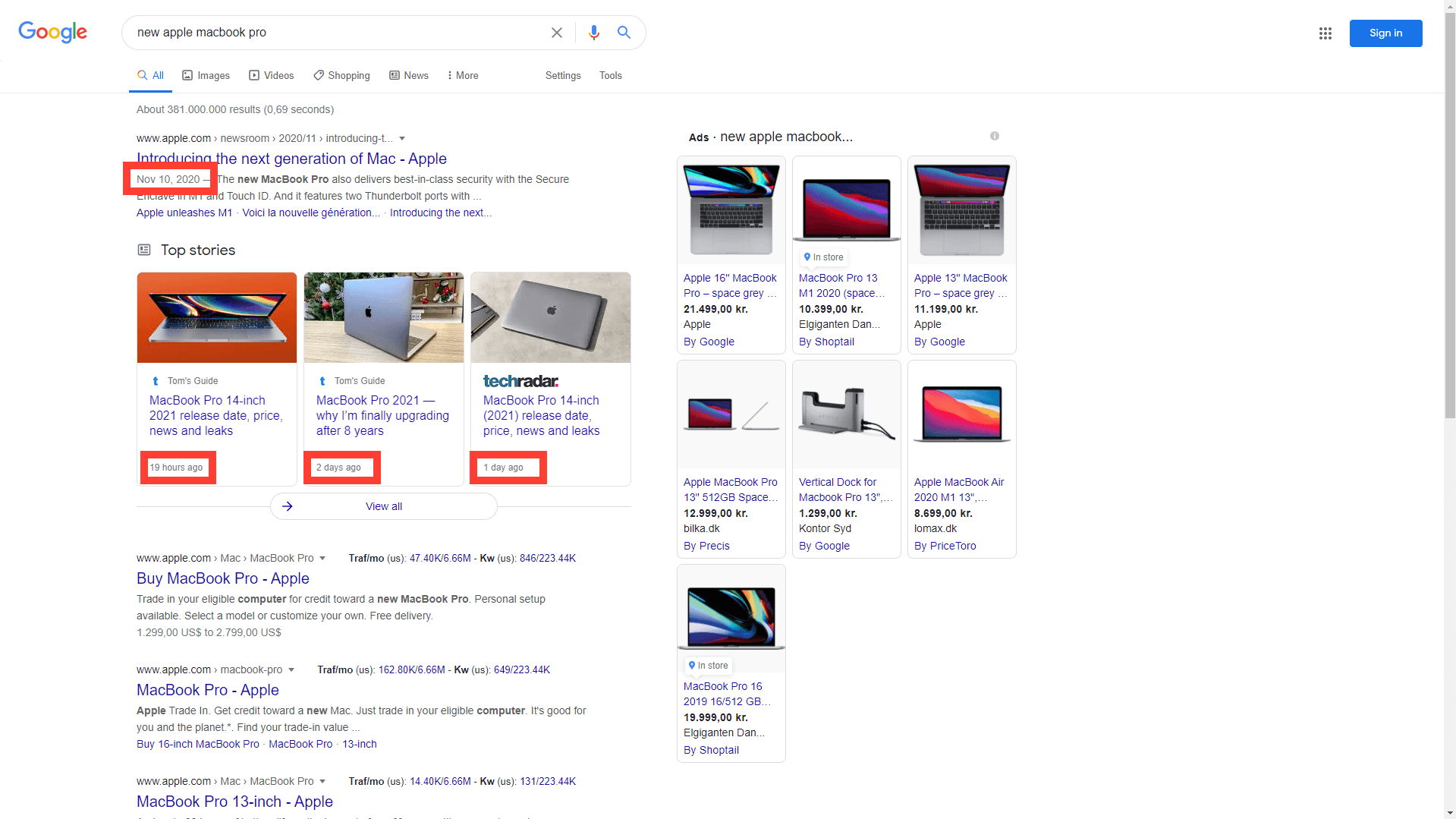
Google has a specific algorithm judging whether certain search phrases need fresh content more than others. It’s called the “Query Deserves Freshness” factor and is most prominent among news websites where things can change daily. Some topics are more “evergreen” and simply don’t have new information available as often. In those cases, the QDF algorithm scores that older pages can also rank higher in search.
However, if you’re just starting out and don’t have any content that brings relevant traffic yet, simply don’t worry about this part. At this stage, it’s much more important for you to publish new and better content and get started with on page SEO rather than update old articles.
11. Feature respected authors from your industry
Building authority on a subject is challenging and takes time. However, you don’t have to do it all by yourself. Featuring authors that are known and respected in your industry will help you achieve two things:
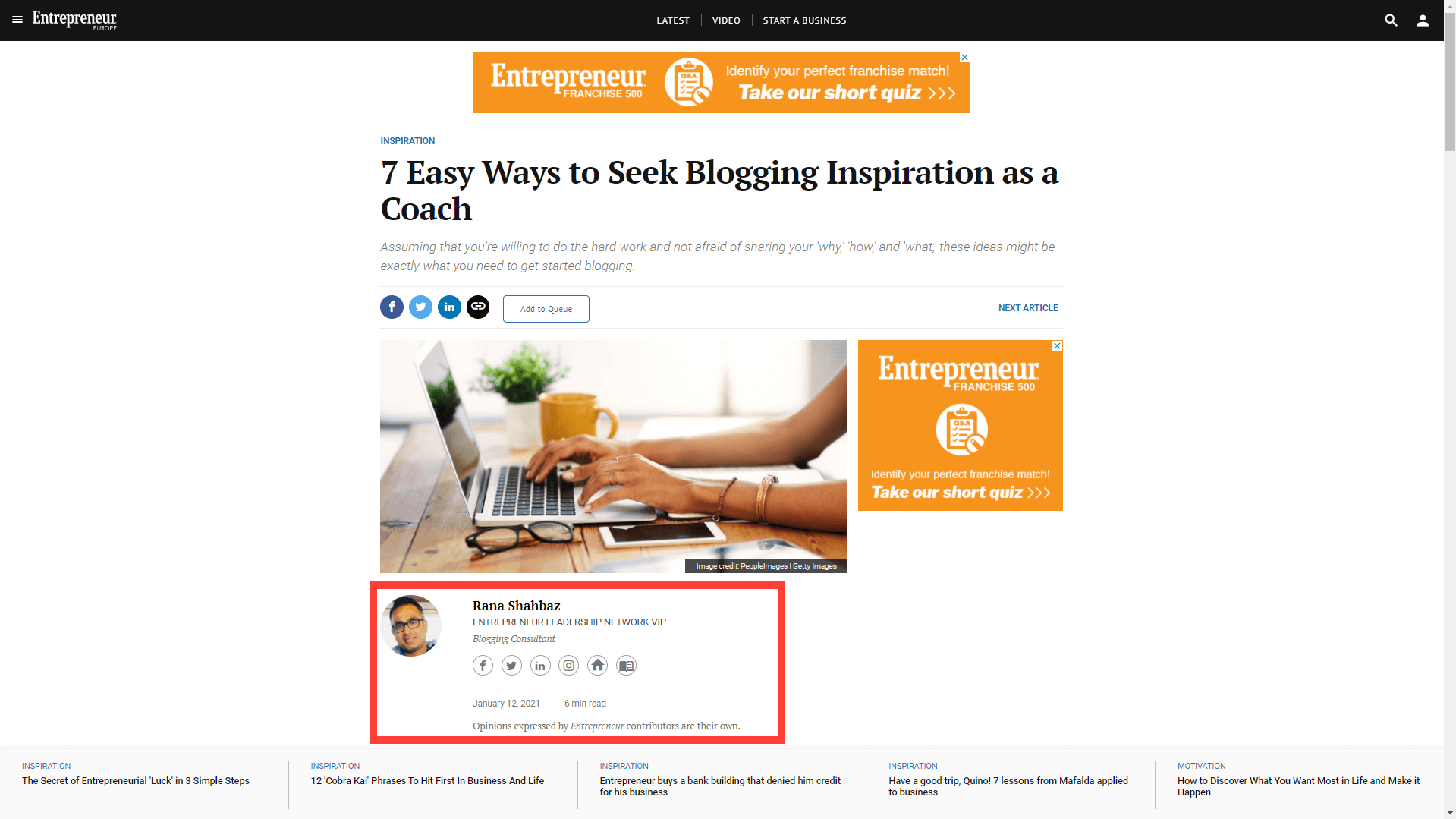
Firstly, you satisfy Google’s E-A-T signals. E-A-T stands for expertise, authoritativeness, and trustworthiness. As the name implies, Google wants to feature content that people can trust. Featuring authors who have an online presence on a given subject gives Google the reason to see your pages as valuable, too. It also helps build EAT for yourself and the posts you write.
Secondly, by featuring others on your page, you often get the spillover effect of their network. That is to say, featuring someone else is more often an excellent reason for them to share your content – which reaches their audience and builds your brand among these people, too.
12. Revamp your website structure to outrank them
Your website structure impacts how your users and Google perceive your website. Properly nesting your URLs in their respective category folders allow users to navigate your site better. It also allows Google to group and classify your content easier – which it uses to determine what your website is about.
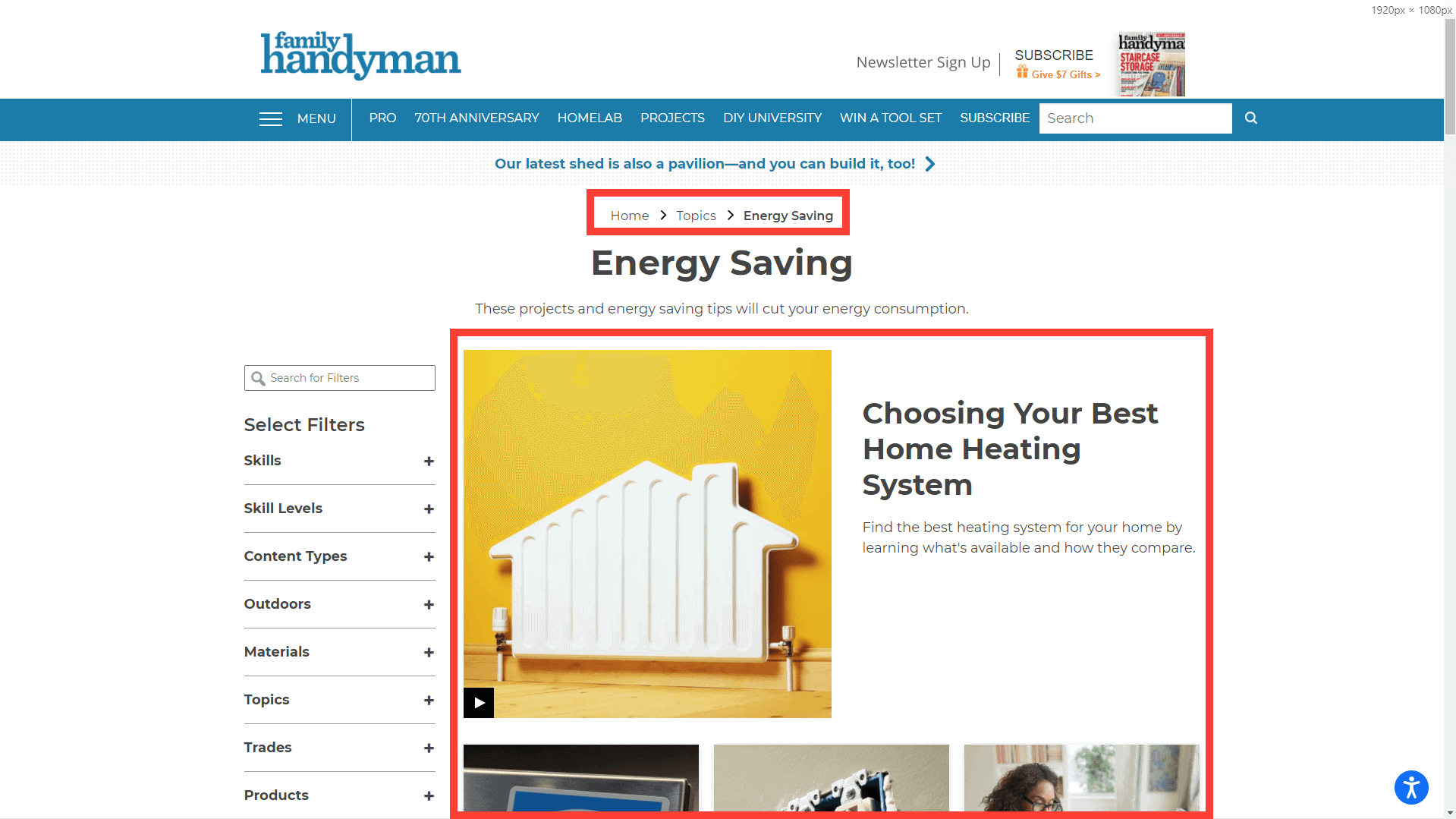
Google likes promoting websites that show expertise on a given subject rather than websites that are “all over the place.” Establishing a better website structure helps Google recognize your overall expertise by grouping your subjects.
Additionally, the reality is that if you prove your website as an authority on one specific topic, you’ll have a much easier time doing this the second time for a related niche. For example, say your website features everything related to outdoor activities. Suppose that it includes camping, fishing, and hunting. Spreading yourself thin and adding a little content for each of these is not viable in the beginning – since you need to prove yourself on each of them simultaneously.
13. Link important pages & articles internally
Similarly, Google uses your signals to categorize and group content. One way you can positively influence that is to add internal links. As a bonus, internal links also help users look for more information.
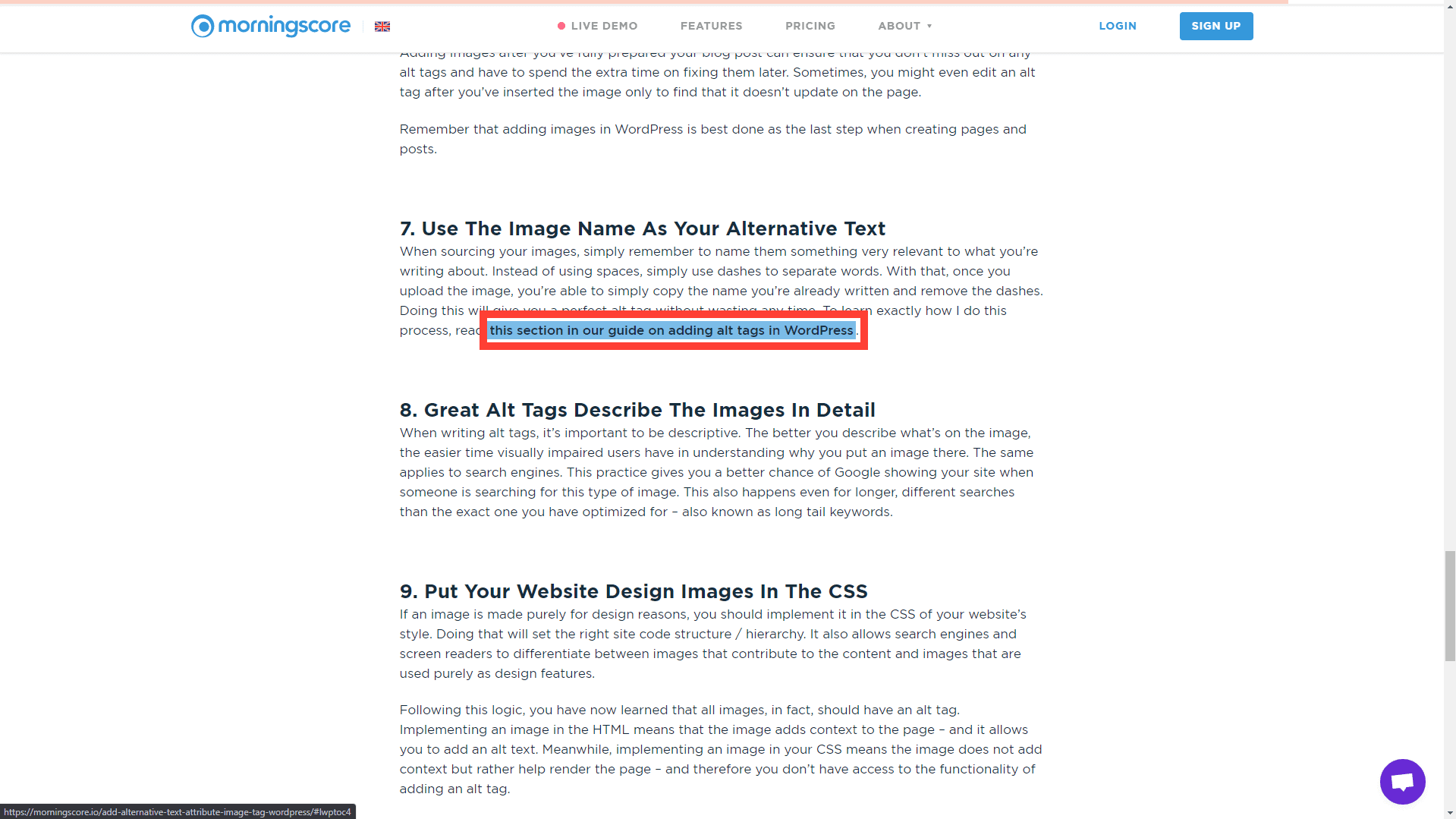
Internal links are one of the best ways to tell Google which pages are related while helping users interested in learning more. They allow individual pages to pass value between them – and are one of the best things to do compared to the “input” they require.
Simply listing all of your pages and classifying them by topic opens up many opportunities where you can contextually point one page to the other.
Combined with the tips above about creating more content, this allows you to point many of your new potentially valuable pages to and existing product or service pages so that you improve their rankings.
14. Increase your overall website authority
We’re now slightly transitioning into a topic that is known as “off-page SEO.” As we established above, Google features respected websites. One of the best ways for Google to judge how authoritative you are is to monitor mentions of your website or brand and links on other websites pointing to it.

The idea is simple – if other websites link back to you, there’s likely a reason for that, and you deserve to be shown more than other websites that aren’t known as much. One of the best ways to build authority is to get links pointing directly to your homepage or mentions of your brand. This way, you improve the ranking odds for all of your pages and raise brand awareness.
The easiest way to get started with this is to contact people you know in your industry – or industries with something to do with your industry. For example, if you run a restaurant, finding food bloggers in your area is a great way to get started. From there, you can either ask them to feature you – or to contribute with original content you’ve created. Such content could be videos, images, or text.
To give you an example, a restaurant can invite the food blogger to do a full-page review of their food, the atmosphere, and the overall service on their page.
15. Build authority for individual landing pages
As we mentioned above, some individual pages deserve links too. Getting people to talk about your products or services can increase these individual pages’ value in Google’s eyes. In SEO, links that point to more niche, topic-specific individual pages that aren’t your homepage or one of your key pages are called deep links.
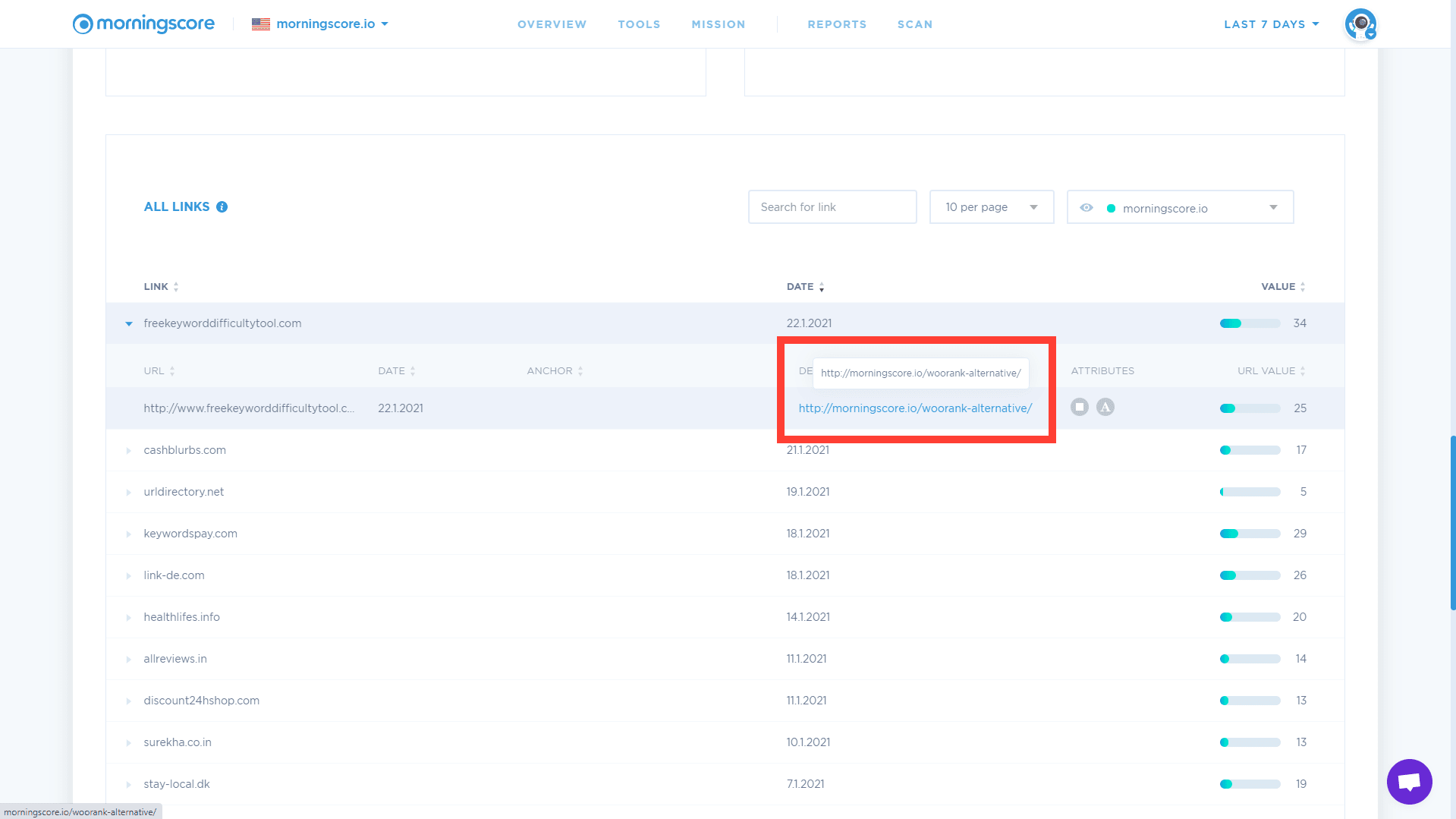
However, since some pages are virtually impossible to link to naturally, there are ways to improve their rankings by doing other good work. For example, likely, your product pages won’t directly get links to themselves. However, writing great informational content can attract valuable backlinks and open opportunities for internal links directly to your products.
16. Create simpler and more relevant URLs
The structure of your URLs is fundamental from the perspective of your end-users. Firstly, you want to keep URLs as simple and as short as possible. Secondly, you want to include your keyword in your URL because users looking at it immediately know what it’s about.
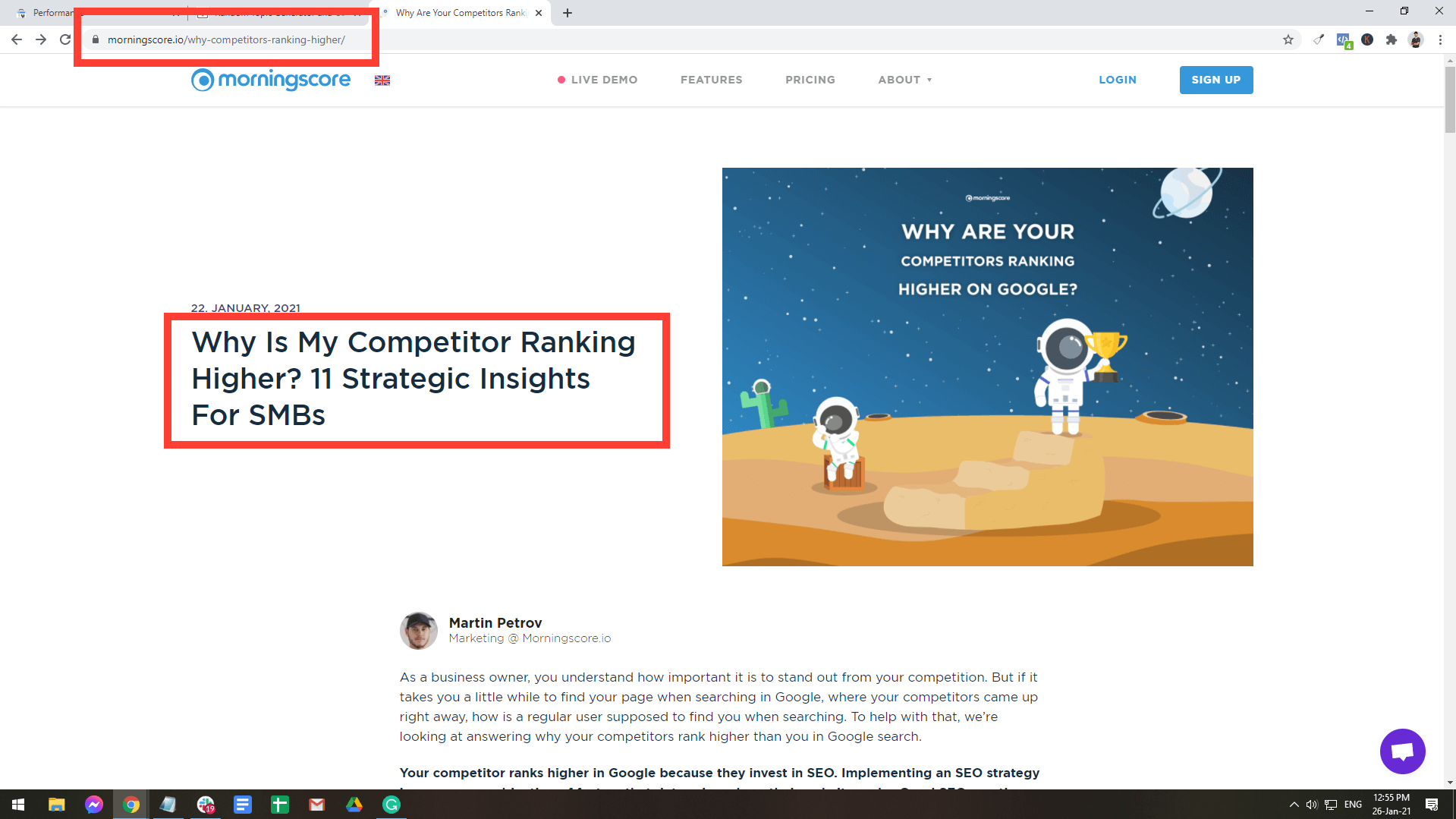
Therefore, you’ll likely need to tailor your URLs. For example, if you have products, you usually want your URL to be two- to three words long, specifically with the product keyword.
For example, for the search phrase “buy flowers online los angeles,” your URL might look like this: “florist.com/los-angeles/order-flowers.” Similarly, when you write blog posts, you want your URLs to portray what the subject in the post is.
It’s essential, however, to be cautious when changing existing URLs. Google has already “mapped” where to find your pages, and simply changing the URL will confuse it. Doing this can result in a significant loss of traffic – because Google does not know where all your content went. Because of that, every time you change a URL, you need to create a redirect – which tells Google that the page has been moved. See if you have any dead landing pages that need to be redirected using our SEO checker tool.
Think of it as a book: a redirect is “the footnote on an empty page,” telling Google on which page the content continues. If you find this troublesome for now, simply remember to incorporate this into your strategy for future pages.
17. Compress the size of images on your website
The speed of your website is directly impacted by the web assets that the user needs to load. Images are one such asset – and they can often easily sneak a few megabytes of page size that users need to load. Therefore, optimizing your images is critical in SEO.
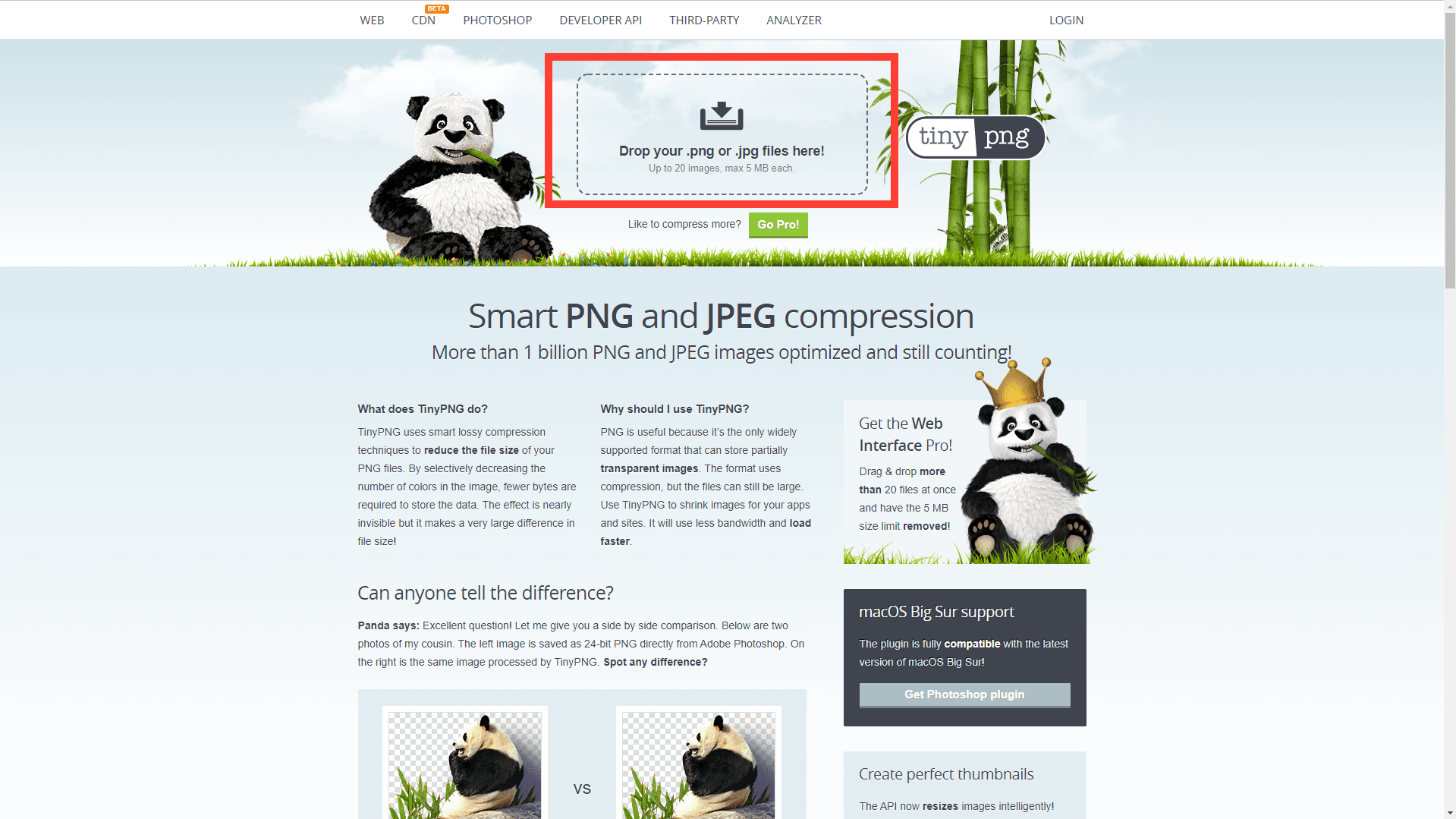
If you already have many images, it’s probably a good idea to use a plugin that can optimize those images for you automatically. Additionally, it’s a good idea to set that plugin up so that it can optimize your images directly upon upload.
Otherwise, if there’s no way for you to use an image optimization plugin, you can do this step manually entirely for free. Using a tool like TinyPNG, you can quickly and effortlessly optimize your images. Once you’ve run them through the image compressor, you’ll see no difference in the quality of images – yet a massive reduction in their size.
Google recommends that you keep images under 150kb for optimal loading speeds. If you’ve already compressed images, but they are still significantly over that size – here’s what you can do. Use a tool like Canva, Adobe Photoshop, or even a basic tool like Microsoft Paint to reduce the image’s resolution. How much strictly depends on how far off the 150kb mark you are – however, we generally aim for sizes smaller than 1920px by 1080px.
18. Use a lazyload technology for images & videos
One of the big troubles in web development is that, by default, all web assets load at (almost) the same time. This means that absolutely everything appearing in the code will be loaded right when the user comes, including images and videos.
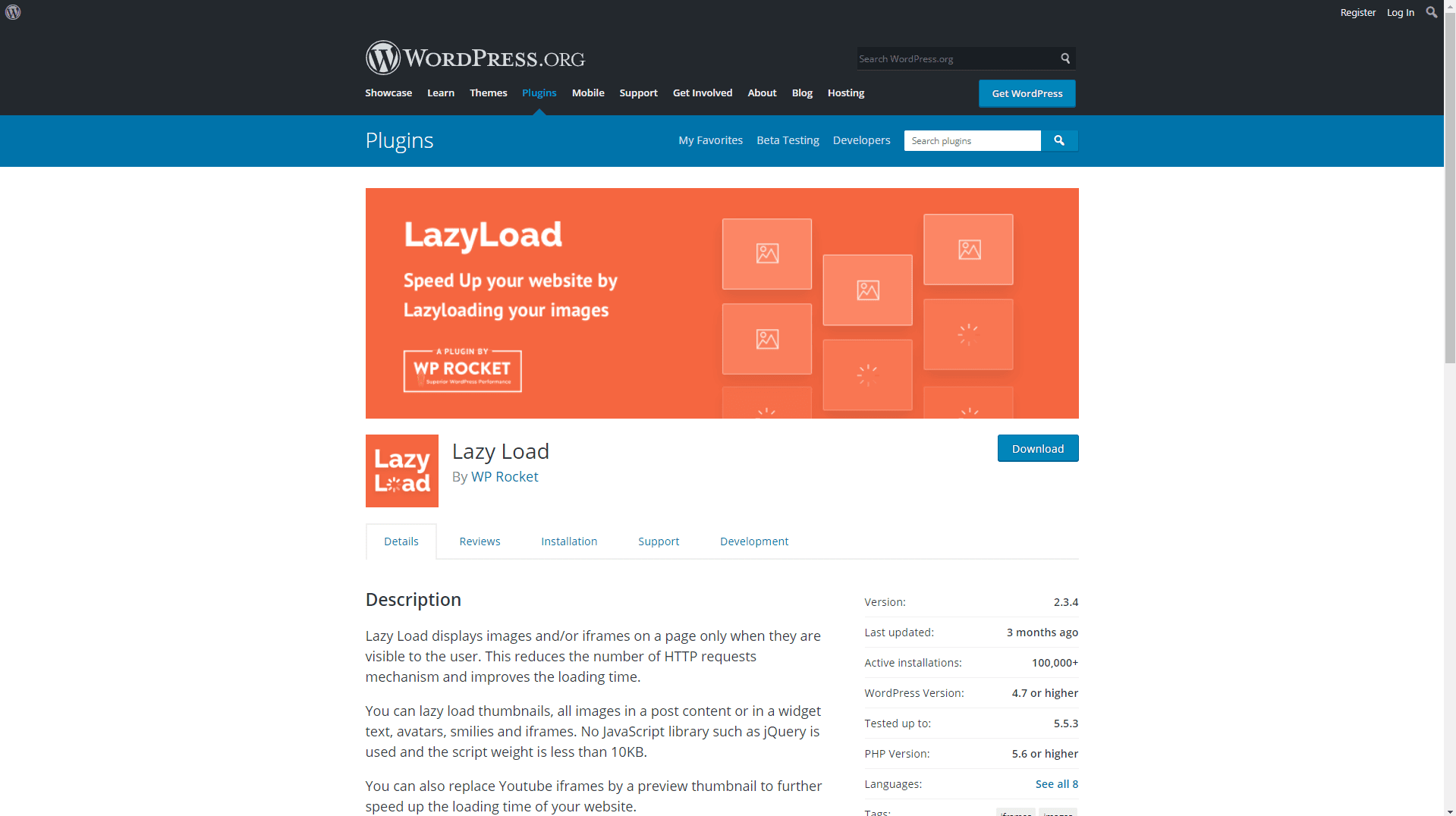
While this sounds great for users browsing from high-performance computers with lightning-fast internet, this is not optimal for everyone else. Most of your website visitors have certain limitations in technology – slower mobile devices, slower mobile internet, etc.
Because of that, lazy-loading is an invaluable technology that you should implement if resources allow for that. Essentially, when a user visits your site, it prevents all images from being loaded simultaneously. Instead, the images are only loaded once a user scrolls down to them in their field of view. This is great because if a user doesn’t need to scroll to the bottom of the page, that will save them, say, a second or two in loading all pictures on a page.
This technology improves your overall website speed – and thus the user experience – and we know that faster websites have a higher chance of outranking slower websites. Additionally, most prominent Content Management Platforms have plugins that allow you to do that automatically without much trouble.
19. Lower the loading time of scripts & styles
To build upon the point from above, your website speed is also dependent on things you don’t directly “see” on your page. Such are CSS style sheets, HTML code, and JavaScript scripts. The important thing here is that these scripts can slow down all websites – even those that aren’t over-the-top fancy and look very standard. Because of that, optimizing your scripts can make them easier to load for the end-users, leading to a positive increase in their user experience.
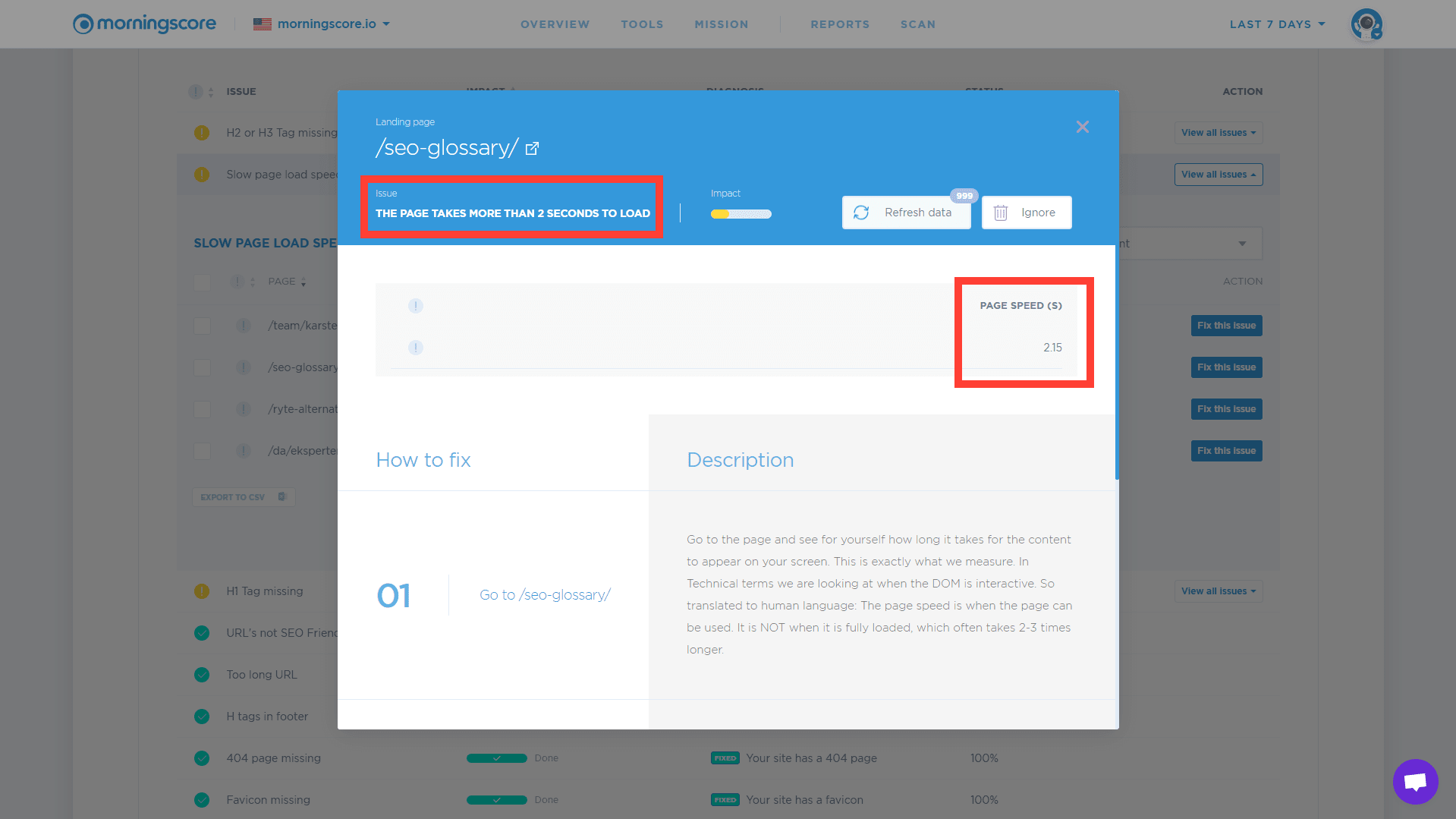
If you don’t have experience with this, it’s best to consult a developer who can help you with this practice. Doing this will ensure you don’t remove essential scripts that make your website run smoothly.
20. Create a mobile-friendly version of your site
In 2016, mobile searches overtook desktop searches. Because of that change, Google wanted to adapt and introduced mobile-first indexing. Essentially, Google said that as website owners, our priority should be mobile visitors – because they come with many limitations in their browsing capabilities. This statement applies to all industries – anything from gift stores to heavy-industry and manufacturing.
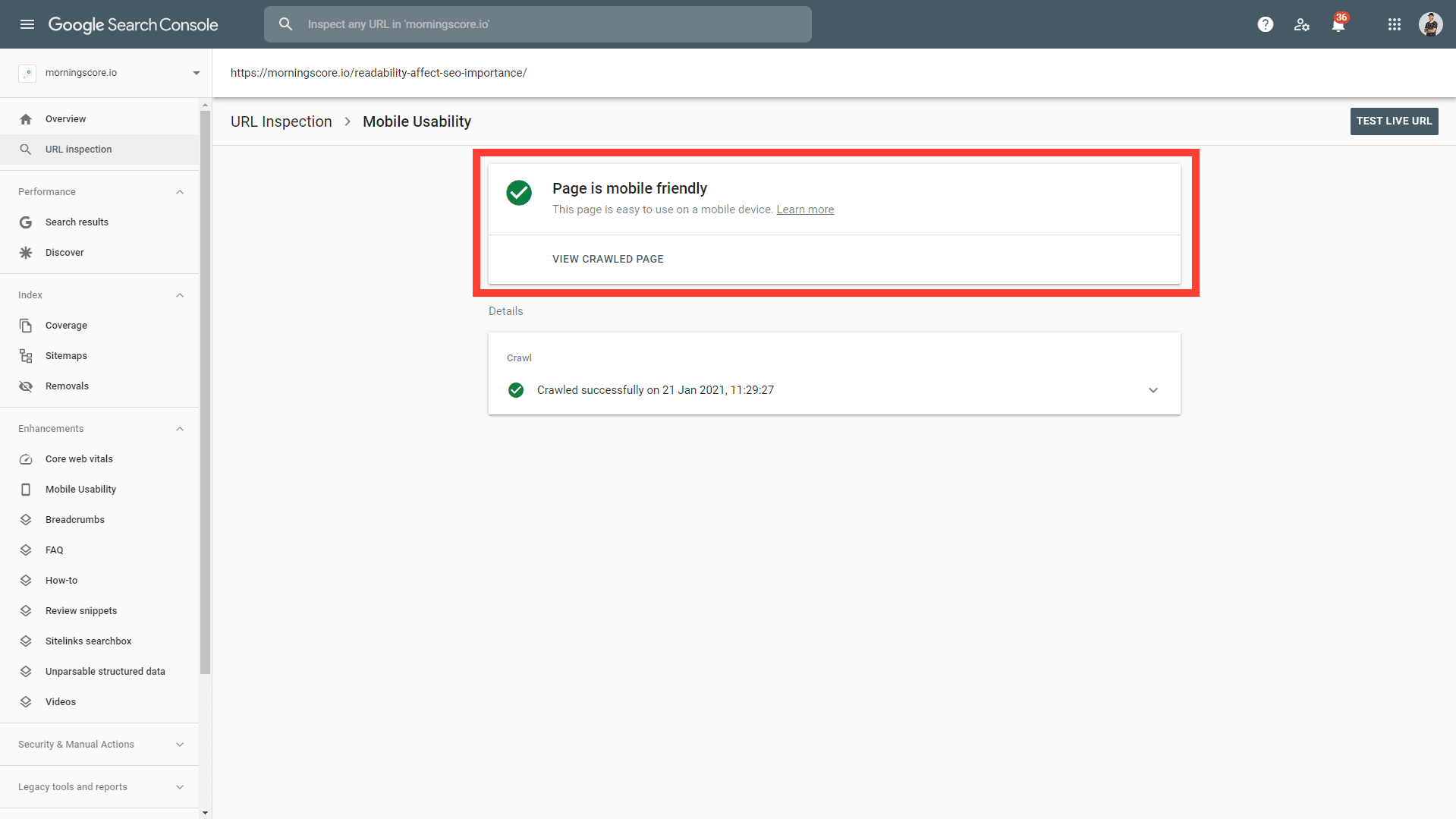
Most websites running on a major CMS nowadays come as mobile-friendly by default. However, this is also dependent on your theme and setup. Your competitors might already have their website suited for mobile visitors. Offering a mobile-friendly version of your website for your visitors is a must when trying to outrank your competitors in the long-run. Even though Google might give you a “pass” in the short term, not implementing this technology will hurt your rankings over time.
21. Protect your website with an SSL certificate
As we established, Google’s goal is to offer the best, most-trustworthy content possible to people browsing the web. One factor that it considers is the security of the website they “recommend” at the top. Unprotected websites have a higher chance of exploiting user data – and thus, Google tends to avoid recommending them.
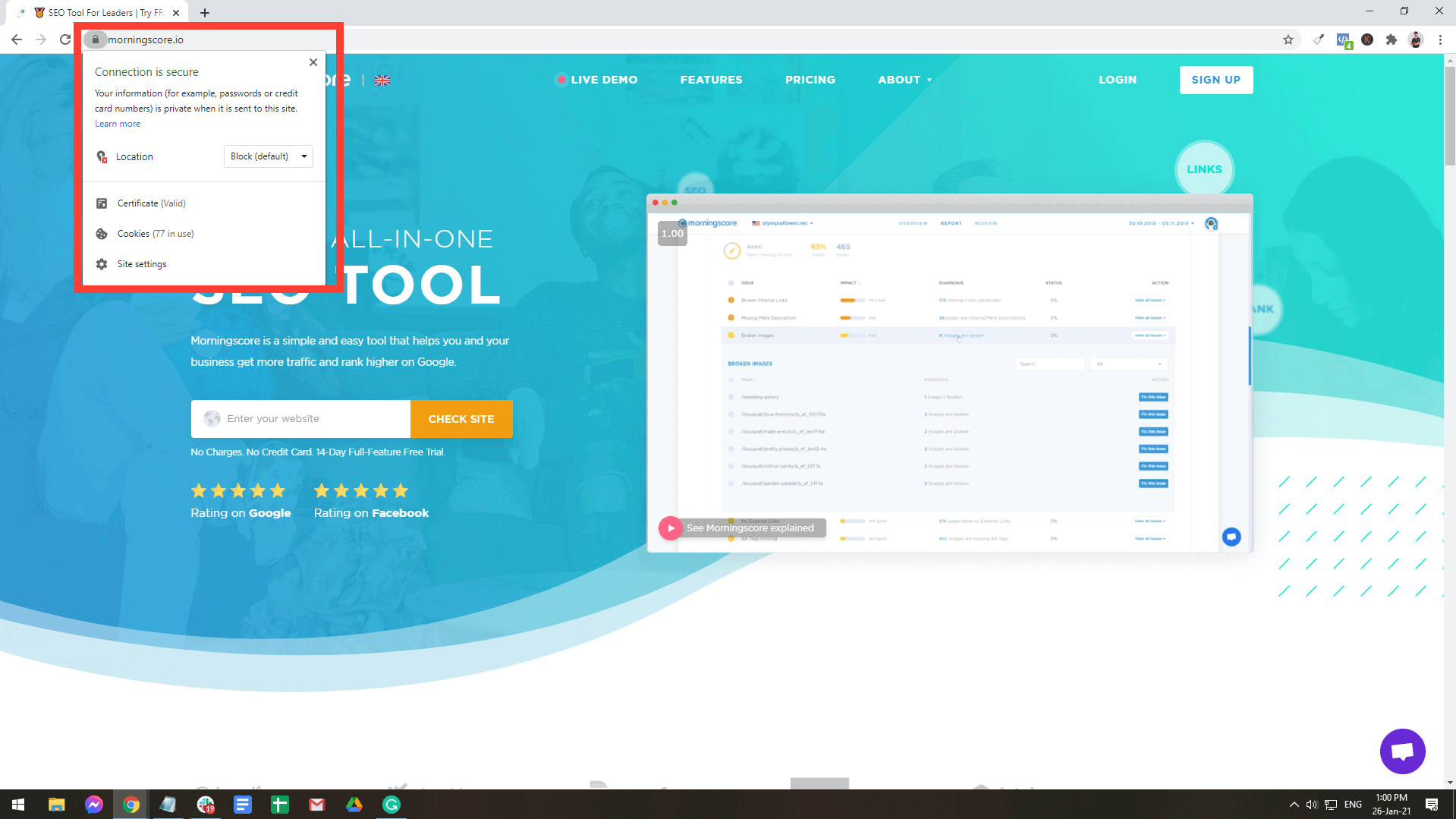
Therefore, to outrank your competitors – and to remain at the top – you most definitely must offer a secure website to your visitors. This factor is especially true for e-commerce websites where users directly input their critical payment information. If you’re handling online purchases through your website, it is an absolute necessity to secure the purchases – and an SSL certificate is part of that equation.
22. Implement Structured Data on important pages
Google handles enormous amounts of data every second. While their algorithms are getting better at understanding both user’s search behavior and what each website offers, there are still some limitations.
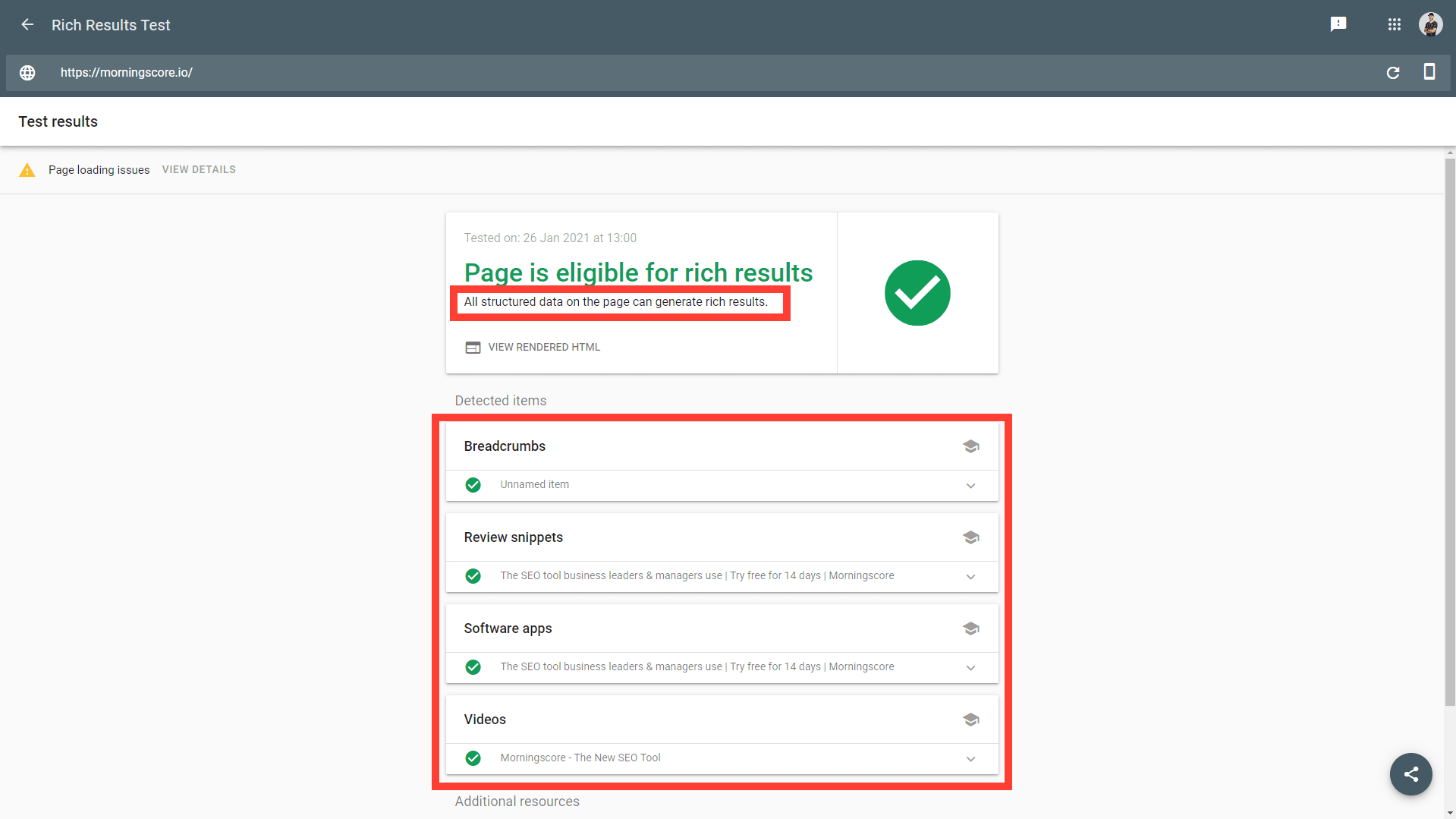
Structured data, also commonly referred to as Schema markup, is a type of script that doesn’t directly interfere with your website – yet informs search engines like Google what your pages are about. Using structured data helps you highlight important sections of your website, allowing Google to prioritize them more effectively.
For example, using product markup on your product pages lets Google prioritize that page over all your other pages when users search for products like yours. The same is true for articles, FAQ sections, etc.
As an added benefit, Google also shows more elements from the page on the search results on certain results. These elements improve your visibility and attract attention – both of which are factors that enhance your click-through-rates.
23. Outrank competitors with Google My Business
Google My Business is essential in outranking your competitors in local search results. Having a well-optimized Google My Business listing helps you display better and more relevant information in the search results. It also allows you to appear in the Local Map Pack when customers search for your relevant main keywords. Lastly, GMB provides you with the opportunity to collect reviews – which partly helps you build E-A-T in your industry.
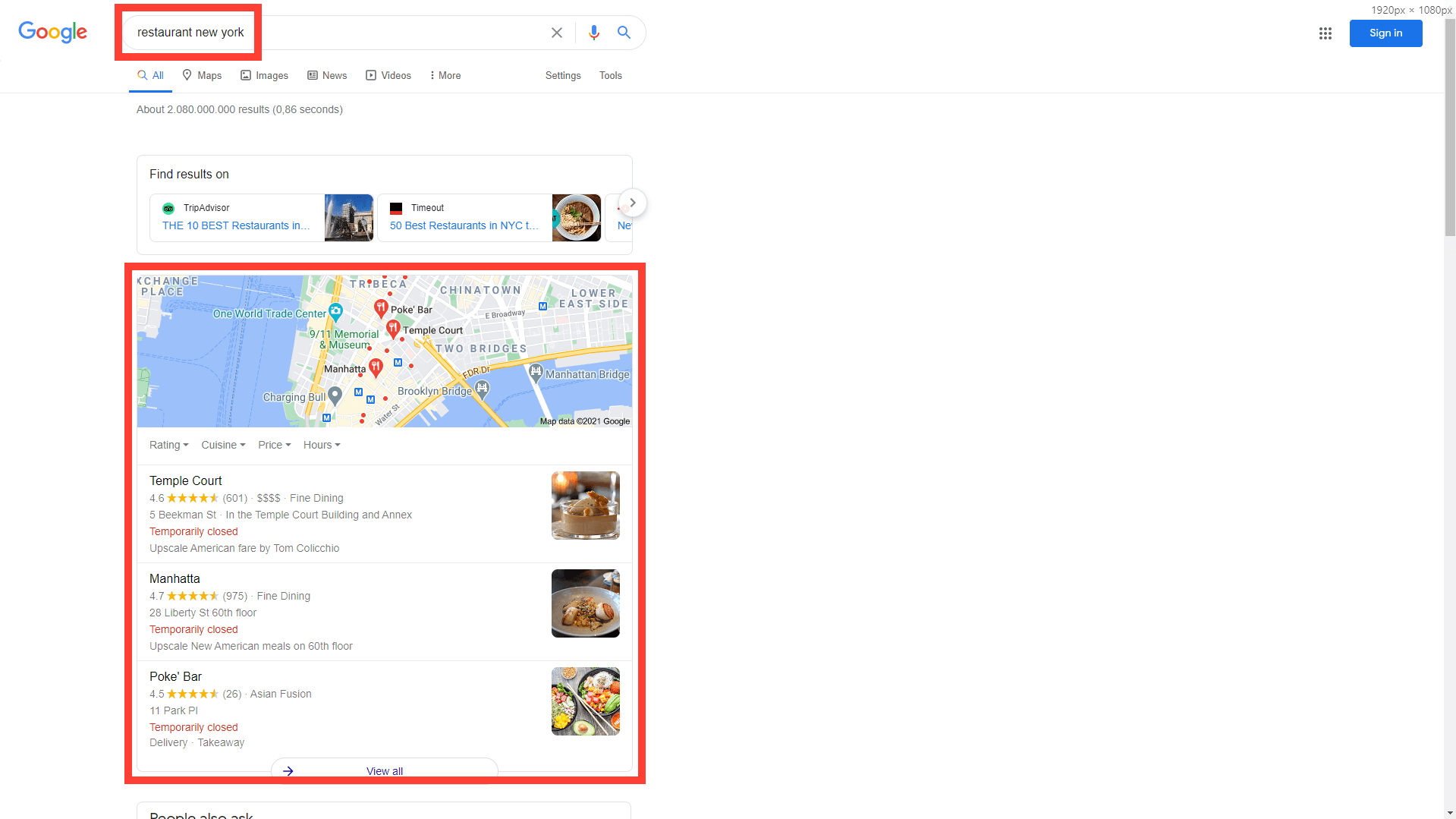
When you create a GMB listing, your company will be added to Google Maps. Google Maps are connected to the Local Map Pack that appears when a user searches for local products or services. The Local Map Pack is relevant for and usually happens when searchers use the name of your city or area in their search query – but is not limited to that only.
Showing up in one of the three spots in the Local Map Pack further increases your visibility. It gives you a chance to display information that would otherwise not be visible in an organic search result.
Reviews and ratings help you increase your perceived authority and trustworthiness in your target market’s eyes. People who see your brand – and notice it has many good reviews, quickly realize they can trust you. In turn, this will help you build your brand with them – and prime them to click on your results in the future.
24. Boost Social Media to outrank SEO competitors
While it isn’t a direct ranking factor, Google also monitors your presence on other platforms. Similarly to Google My Business, you can use social media as part of your brand awareness campaigns to boost your SEO.
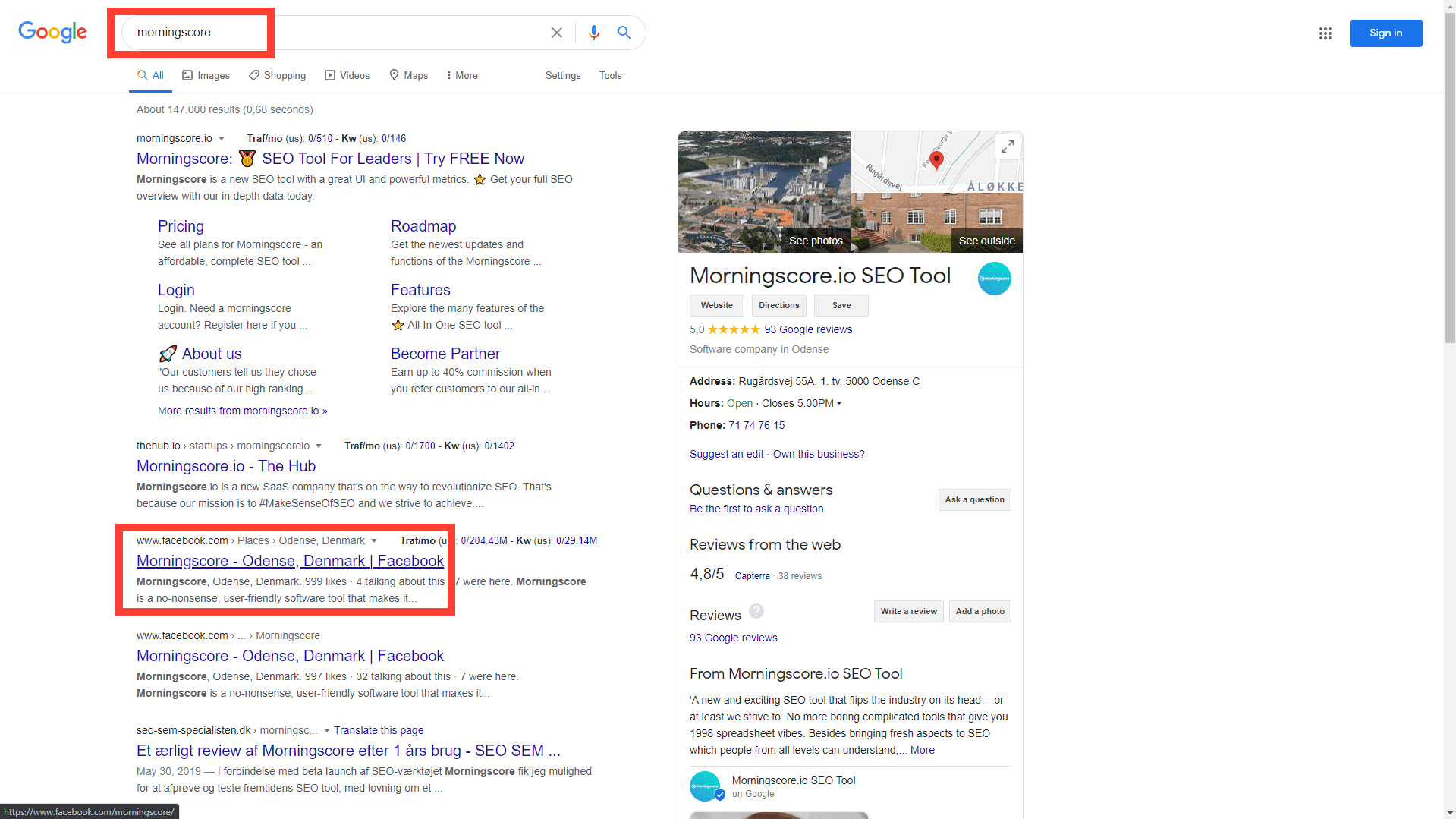
Having more people know and trust your brand will improve your social signals. Social signals tell Google your brand is real – and people trust it. Indirectly, your social media presence improves the chances of users clicking on your listing in Google’s result pages because they’ve seen your brand in a positive light. In turn, this will increase your CTR – and help you outrank competitors in both the short- and long-term.
25. Use strategic Google Ads for brand awareness
While Google Ads do not directly help you rank higher, they have an indirect influence on your Google rankings – and can be a valuable source of data. There are two great ways you can use them to build a better brand if your marketing budget allows for it.
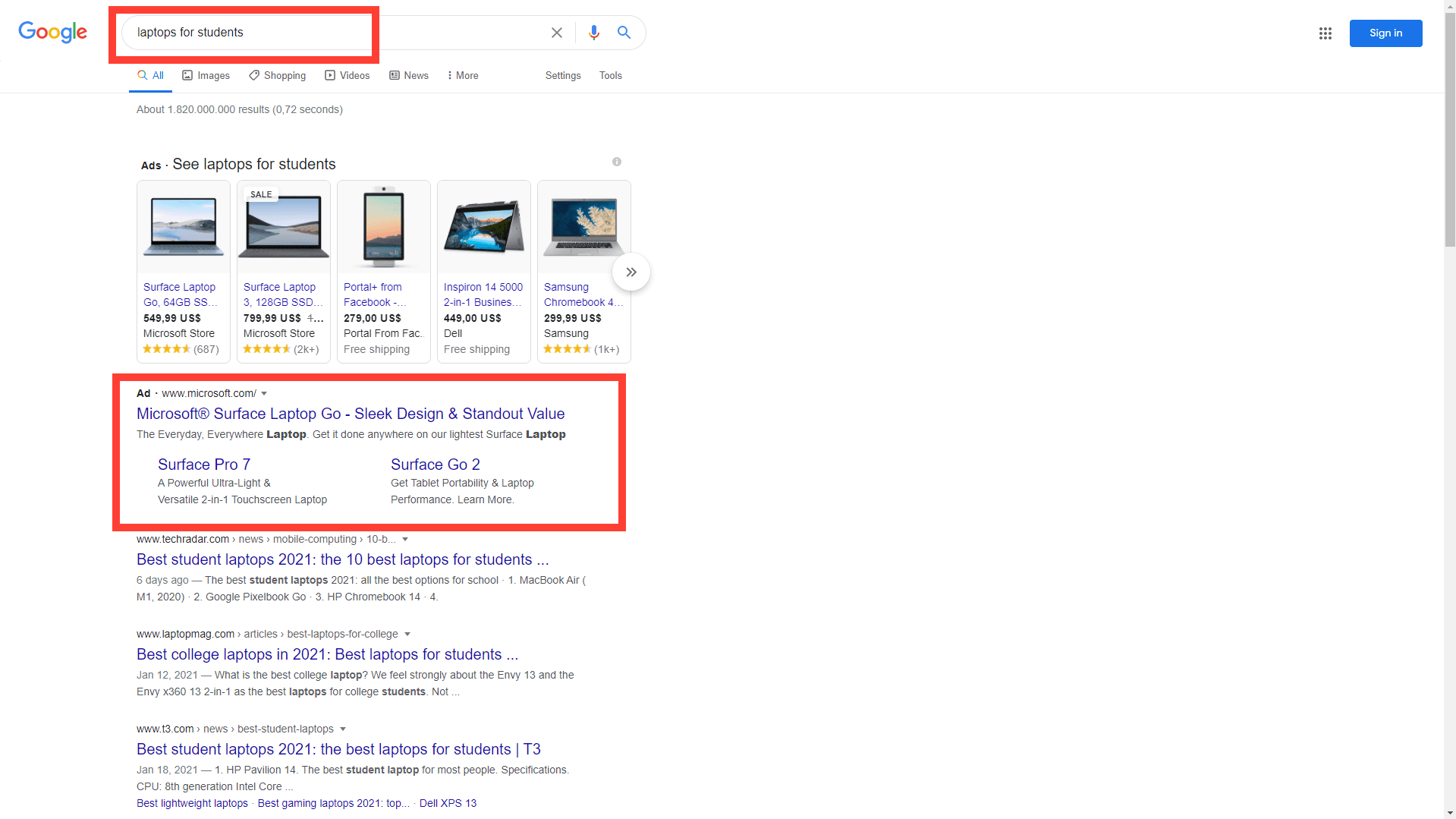
The first one is to use Google Ads to increase your brand awareness. It’s no secret that bigger and more respected brands have an easier time ranking higher in search. Therefore, to outrank your competitors and to remain there, you can use Google Ads to spread the word about your brand. This strategy is great because you’re employing it directly when the user finds it most relevant. That is, in the specific moment when users are in the mind space of finding a solution – and they search for it – your brand appears at the top as one of the most relevant ones.
Secondly, Google Ads is also an excellent way for you to support your SEO efforts in the short-term. Because SEO takes time to work (anywhere from 6 to 18 months for its full effect), Google Ads can be a great supplementary listing to attract relevant traffic until your pages improve their rankings. Once your pages rank high enough, higher than your competitors, turning off your Google Ads and keeping only your organic listing can increase your profitability.
26. Collect valuable test data through Google Ads
Similarly, Google Ads lets you collect data and improve your landing pages. Test a page’s performance immediately after launching it can be invaluable – and is made possible by the data you collect from Google Ads.
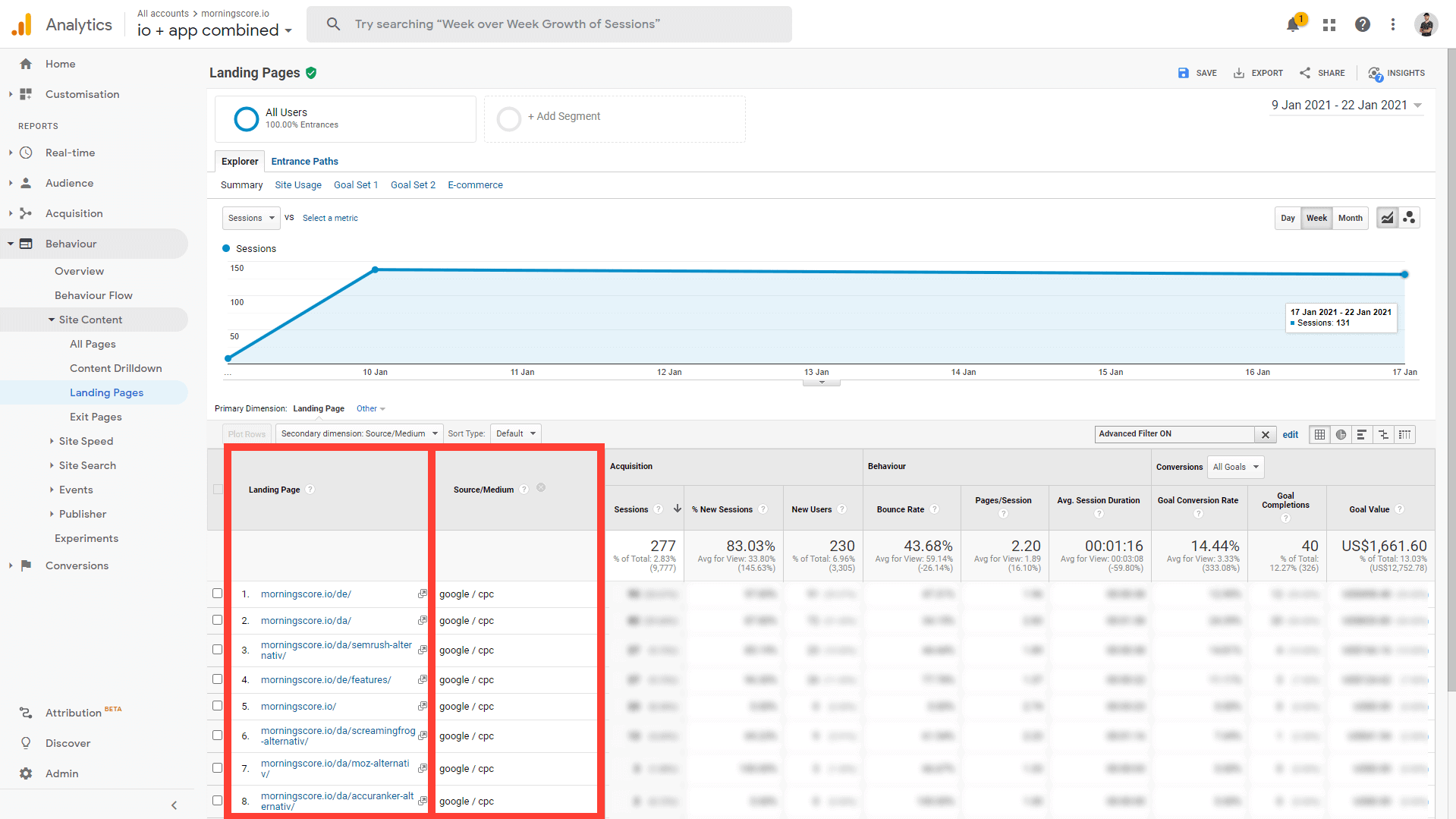
If users see your Google Ads listing, find your result relevant, and click on it – but stay a very short amount of time on the page, that’s a great indicator you need to make some changes. The opposite is also true – and if users remain on your site, you know you’ve got a winner. This tactic is so great that you can use it as a decision-making factor even before you’ve invested the resources in creating new pages.
To illustrate the point better, let me offer an example from our experience. Last year when we were unsure whether certain keywords are relevant to us – and we should invest the time in building them – we decided to run a Google Ads campaign. We targeted the specific keywords – but sent the users to a more generic page targeting similar terms – but not exactly.
In turn, this allowed us to see if users are likely to see whether users click on our listing and engage with the page (i.e., convert to a free trial user). And once we saw that users strictly want the particular content they searched for, we decided that investing the resources in creating something this niche will not pay off.
2023 update: Google’s own analytics tools are hit hard by GDPR and other privacy initiatives. Consider different options. The app marketplace Nachonacho has several good offers for strong analytics tools
27. Rank on YouTube & drive traffic to your site
Lastly, if you’re better in front of a camera rather than using a pen and paper, you’re in luck. Video platforms like YouTube can be ridiculously beneficial to your website’s rankings because of three specific reasons.
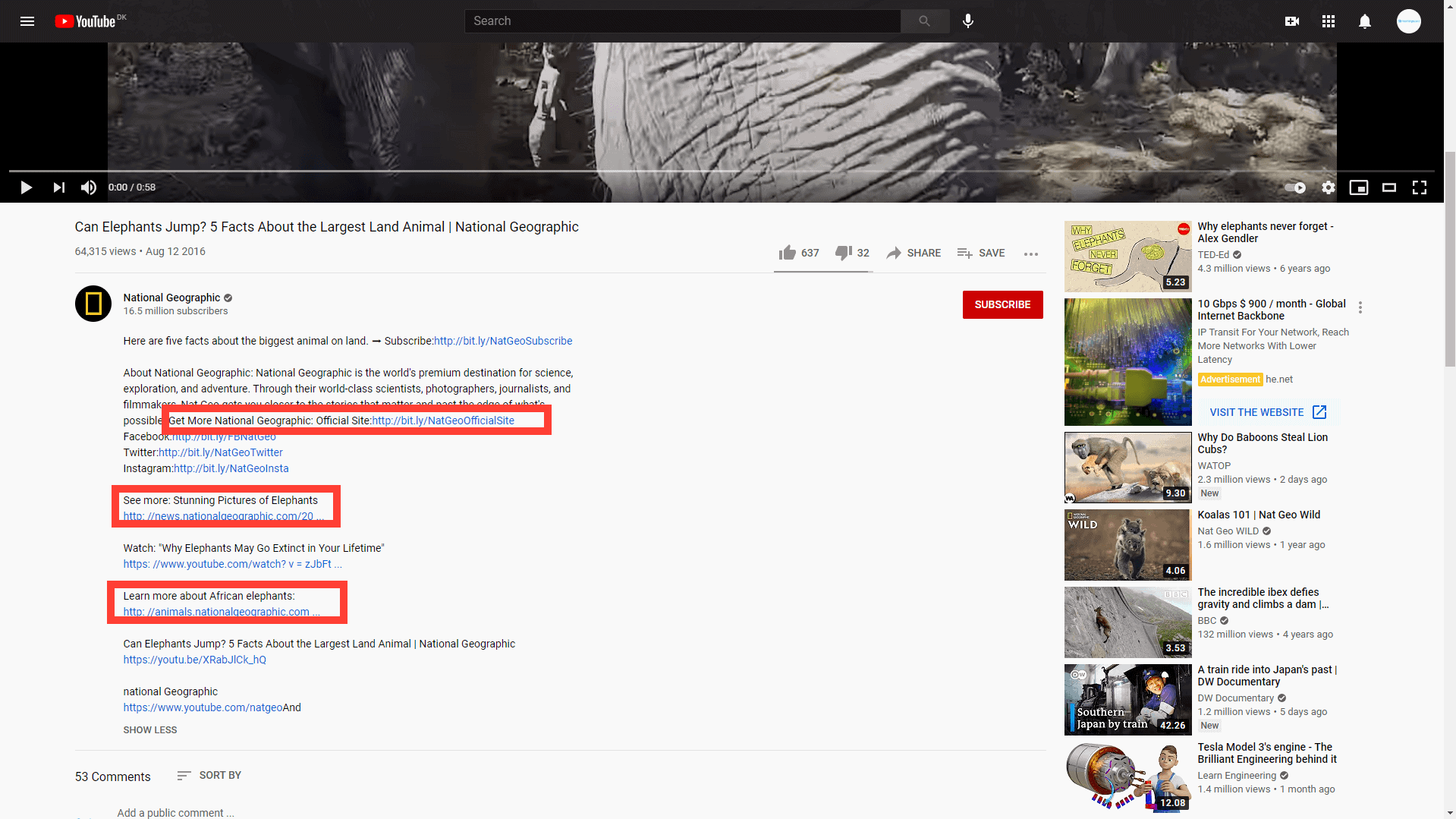
Firstly, YouTube is a different platform than Google, yet it mainly works as a search engine in a similar fashion. In fact, YouTube is the second biggest search engine in the world. Combined with how people use the platform, there’s likely much less SEO competition on your target keywords. Because of that, YouTube SEO can be an excellent way for you to attract organic traffic without having to deal with your competitors.
Secondly, organic traffic and YouTube presence help you build a brand. Doing this increases your overall authority on a subject naturally. Additionally, it will be easier for you to drive direct traffic to your website from YouTube because of the less crowded competitive market.
Lastly, it can sometimes be easier to get featured in a video than an article since many video creators are open to new ways of sourcing content. Creating video content in collaboration with bigger channels can be a great quick promotional tactic. However, it also has a long-lasting strategic benefit. That is, if you or your website get featured by a more prominent channel, your traffic will shortly spike – but maintain a higher average level once the spike is gone, too. The implications are tremendous, as it means this is one of the best ways to build a stronger brand and thus outrank your competitors.
In turn, all of these benefits help the user see your website as more authoritative, and thus their behavior signals tell Google it should rank higher on the search results page.
Closing words
Each of these factors will help you rank higher than your competitors on Google. Some have strong effects while others work like a “standard” that you simply have to meet – and don’t necessarily give you a huge boost. Overall, we can conclude that providing a better experience to your users, combined with building more authority and trust in your niche, is the way to go.
You should always have the competitors in mind and find out what they are doing better than yourself. To stay on top you’ll need a competitor analysis tool to assist you in identifying your competitors strengths and weaknesses.

